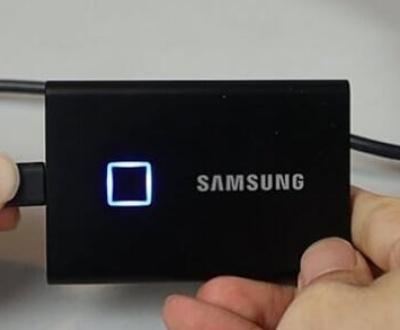Whether you’re upgrading your storage, selling your device, or simply trying to clear space, erasing a Seagate external hard drive can be a straightforward task when done correctly. But it’s more than just hitting delete especially if you want to make sure your data is unrecoverable.
Why You Might Want to Erase Your Drive
Before diving into the how-to, let’s take a moment to explore why you might want to erase your Seagate external hard drive:
You’re selling or giving it away and want to ensure your personal data is unrecoverable.

You want to repurpose it, maybe for use with a different OS (like switching from Windows to Mac).
You’re troubleshooting file system issues or malware.
You want a clean slate, especially if your drive has been cluttered or slow.
Knowing your reason helps determine whether you need a simple format or a more secure erasure method.
Method 1: Quick Format (Windows and macOS)
A quick format is the fastest way to erase your Seagate drive, but note that it doesn’t completely remove the data—it just marks the space as free.
On Windows
Plug in your Seagate external hard drive.
Open File Explorer and find your drive under “This PC”.
Right-click the drive and select Format.
Choose your file system:
NTFS for Windows-only use.
exFAT or FAT32 for cross-platform compatibility.
Leave “Quick Format” checked.
Click Start > OK to begin.
On macOS
Plug in your Seagate drive.
Open Disk Utility (Applications > Utilities).
Select your drive in the left pane.
Click the Erase tab.
Choose a name and file format:
Mac OS Extended (Journaled) for Macs only.
exFAT for cross-platform use.
Click Erase to confirm.
⚠️ Warning: This method is not secure. Data recovery software can often retrieve files after a quick format.
Method 2: Full Format (Windows)
A full format does a better job of clearing the disk, as it also scans for bad sectors.
Connect your Seagate drive.
Open File Explorer > “This PC”.
Right-click the drive > Format.
Uncheck Quick Format.
Choose a file system and start the format.
This can take longer, especially for large drives, but it’s more thorough than a quick format.
Method 3: Secure Erase with Disk Utility (macOS)
Disk Utility in macOS allows for secure erasure options.
Connect your Seagate drive.
Open Disk Utility.
Click View > Show All Devices.
Select the physical drive (not the volume beneath).
Click Erase.
Click Security Options and drag the slider toward “Most Secure”.
This will write over the entire drive multiple times.
Click Erase to begin.
This process can take a few hours depending on your drive size, but it makes data recovery nearly impossible.
Method 4: Use Third-Party Tools
For advanced secure erasure, third-party tools offer more options:
On Windows
Eraser (Free): Lets you securely delete specific files or wipe the whole drive using DoD-standard techniques.
CCleaner Drive Wiper: Includes a drive eraser that can perform a full secure wipe.
On macOS
Permanent Eraser: Uses the Gutmann algorithm (35-pass) for secure deletion.
Data Rescue’s Secure Erase: Great for wiping entire external drives.
On Linux
dd Command: For experienced users, dd if=/dev/zero of=/dev/sdX bs=1M will overwrite the drive with zeroes. Replace sdX with your actual drive ID.
⚠️ Always double-check the drive letter before running terminal commands to avoid wiping the wrong drive.
Method 5: Seagate’s Own Tools – SeaTools
Seagate offers a free utility called SeaTools, available for Windows and Linux.
Using SeaTools for Windows
Download and install SeaTools for Windows from the official Seagate website.
Open the application and locate your external drive.
Click the Erase tab or tool (depending on version).
Choose between:
Quick Erase (not secure).
Full Erase (secure, overwrites data).
Confirm and let the process complete.
SeaTools is great for verifying the health of your drive before or after formatting as well.
Method 6: Command Line Tools (Advanced Users)
Windows – DiskPart
Open Command Prompt as Administrator.
Type: diskpart and press Enter.
Enter the following:
bash
list disk select disk X # Replace X with your Seagate drive’s number clean create partition primary format fs=ntfs quick assign exit
This will completely erase all partitions and rebuild the drive.
macOS – Terminal
Open Terminal.
Find your disk ID using:
bash
diskutil list
Erase the drive with:
bash
diskutil secureErase 0 /dev/diskX
Replace diskX with your drive identifier.
The 0 means a single-pass overwrite; 1–4 offer more secure erasure options.
Special Considerations
Erasing a Drive for Cross-Platform Use
Use exFAT if you want to use the drive on both Windows and macOS.
Avoid FAT32 for drives over 32GB or files over 4GB.
SSD vs HDD Erasure
SSDs may not respond well to traditional overwriting techniques. Use manufacturer tools or ATA Secure Erase for full SSD wipes.
Always check if your Seagate external drive is an SSD or HDD before proceeding.
Backups Before Erasing
This seems obvious, but many users forget to back up important data before formatting.
Use tools like Mac Time Machine, Windows File History, or just manually drag files to a new location.
Consider cloud backups (Google Drive, Dropbox, iCloud) if you want off-site safety.
Common Questions
Q: Is formatting the same as erasing?
Not exactly. Formatting prepares the drive for use and can remove data, but it doesn’t always make data unrecoverable. Erasing often involves overwriting the data as well.
Q: Can I recover data after formatting?
With a quick format, yes data recovery software might retrieve files. After a secure erase or multiple overwrites, recovery is highly unlikely.
Q: Can I erase a write-protected drive?
Not without removing the write protection. Check if your drive has a physical switch, or remove write protection via DiskPart (Windows) or Terminal (macOS).
Erasing a Seagate external hard drive can be as simple or secure as you need it to be. Whether you’re performing a quick format, a deep overwrite, or using Seagate’s own tools, it’s important to match the method to your goal. Selling your drive? Use a secure erase. Just starting fresh? A simple format will do.
About us and this blog
Panda Assistant is built on the latest data recovery algorithms, ensuring that no file is too damaged, too lost, or too corrupted to be recovered.
Request a free quote
We believe that data recovery shouldn’t be a daunting task. That’s why we’ve designed Panda Assistant to be as easy to use as it is powerful. With a few clicks, you can initiate a scan, preview recoverable files, and restore your data all within a matter of minutes.
Subscribe to our newsletter!
More from our blog
See all postsRecent Posts
- How to recover deleted voicemail samsung? 2025-04-22
- Samsung portable ssd t5 online recovery 2025-04-22
- Fix western digital external hard drive 2025-04-22

 Try lt Free
Try lt Free Recovery success rate of up to
Recovery success rate of up to









